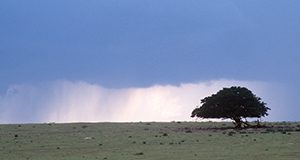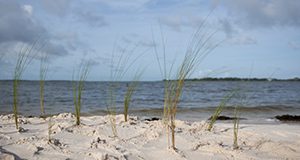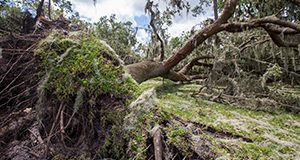Geographic information and geospatial data are vital in many practical fields, including precision agriculture, natural resources management, flood zone mapping and management, and environmental assessment. This 6-page publication introduces publicly available geospatial data, including elevation, land use, soil, satellite imagery, and other thematic maps and GIS software commonly used in spatial analysis. Written by Satbyeol Shin and Young Gu Her, and published by the UF/IFAS Department of Agricultural and Biological Engineering, January 2021.
https://edis.ifas.ufl.edu/ae550
Tag: Young Gu Her
How Is Our Future Climate Projected?
Climate is the long-term patterns and fluctuations in air and moisture. This 5-page article explains how future climate is projected using mathematical models and introduces common scientific terms used when discussing climate change. Written by Young Gu Her, Zachary Brym, Ashley Smyth, and Elias Bassil, and published by the UF/IFAS Department of Agricultural and Biological Engineering, November 2020.
https://edis.ifas.ufl.edu/ae546
How Are Our Future Agriculture and Natural Resources Projected under Varying Climate?
This 8-page article explains how agriculture and natural resources may respond to projected future climate and how climate projections can be useful in developing management plans for the improved sustainability of Florida's agriculture and natural resources. It also aims to help increase the public awareness of climate change impacts on Florida and improve understanding of the connections among climate, agriculture, and natural resources. Written by Young Gu Her, Ashley Smyth, Zachary Brym, and Elias Bassil, and published by the UF/IFAS Department of Agricultural and Biological Engineering, September 2020.
https://edis.ifas.ufl.edu/ae545
Online Sources for Sea Level Rise Education and Extension
The impacts of sea level rise on ecosystems and natural resources are a major concern in Florida, especially in low-lying coastal areas such as south Florida. Sea level rise can impact many aspects of Florida's economy, including urban development, agriculture, infrastructure, and natural areas. This 16-page document introduces, evaluates, and summarizes selected available online sources and tools to educate diverse stakeholders and concerned local residents on important aspects of sea level rise. Written by Young Gu Her, Ashley Smyth, Jiangxiao Qiu, Elias Bassil, Ulrich Stingl, and Laura Reynolds, and published by the UF/IFAS Department of Agricultural and Biological Engineering, June 2020.
https://edis.ifas.ufl.edu/ae543
What Does Florida Weather during the Past 20 Years Look Like?: Florida Weather Represented by the Florida Automated Weather Network (FAWN)
This 8-page document gives an overview of Florida temperature and rainfall during the past 20 years based on historical FAWN data to provide information about the temporal and spatial trends of Florida weather and the frequency and size of extreme weather events such as heavy rainfall and drought. This document also investigates the characteristics of drought and heavy rainfall in relation to hurricanes and tropical storms. Written by Satbyeol Shin, Young Gu Her, Geraldina Zhang, and William Lusher, and published by the UF/IFAS Department of Agricultural and Biological Engineering, January 2020.
https://edis.ifas.ufl.edu/ae537
Hurricane Impacts on Florida's Agriculture and Natural Resources
Hurricanes are capable of affecting almost everything in their paths. Their strong winds and heavy rains can directly impact both inland and coastal areas in short periods that usually last about a day. This new 10-page document reviews basic facts about hurricanes and their effects in Florida and discusses ways they might affect Florida's agriculture and natural resources. Written by Young Gu Her, Ashley Smyth, Pamela Fletcher, Elias Bassil, Ulrich Stingl, Zachary Brym, and Jiangxiao Qiu, and published by the UF/IFAS Department of Agricultural and Biological Engineering, October 2018.
http://edis.ifas.ufl.edu/ae528
How Likely Is a 100-Year Rainfall Event During the Next Ten Years?
This 4-page fact sheet describes proper interpretation of rainfall event probabilities and recurrence intervals, particularly as they are used by engineers and water resources managers in the design and construction of hydraulic structures, such as dams, levees, and canals. This article focuses on rainfall, but its explanations and concepts can be applied to other extreme hydrologic phenomena such as flood and drought. Written by Young Gu Her, William Lusher, and Kati Migliaccio, and published by the UF/IFAS Department of Agricultural and Biological Engineering, March 2018.
http://edis.ifas.ufl.edu/ae523
Florida Rainfall Data Sources and Types
This new 5-page document introduces the sources, providers, and types of rainfall data available to Florida researchers and residents to promote understanding of the rainfall data and their application in studies and daily life. Written by Meijing Zhang, Young Gu Her, Kati Migliaccio, and Clyde Fraisse, and published by the UF Department of Agricultural and Biological Engineering, January 2017.
http://edis.ifas.ufl.edu/ae517






